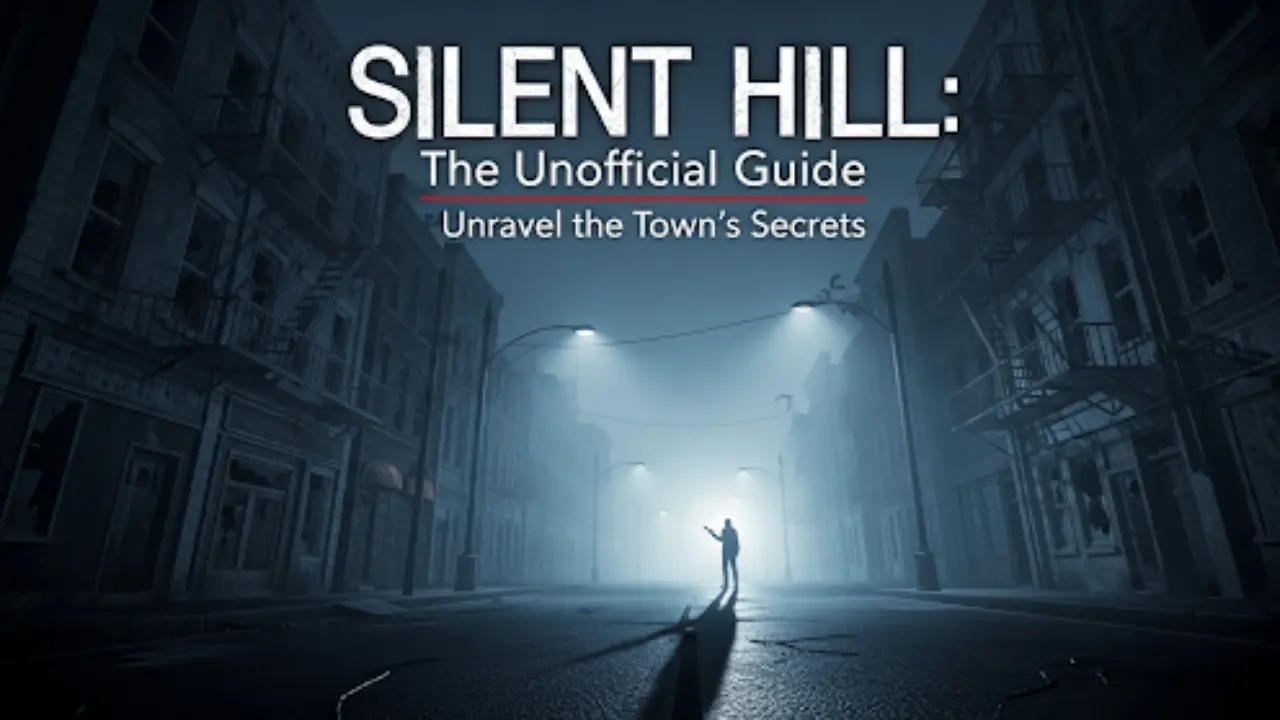Silent Hill is not just a video game—it’s a cultural phenomenon. For decades, this haunting series has captivated fans with its unsettling atmosphere, psychological depth, and unforgettable storytelling. Among the countless discussions and analyses about the franchise, one resource stands out for fans seeking deeper knowledge: guia silent hill geekzilla. This guide is more than a walkthrough; it’s a journey into the heart of what makes Silent Hill so compelling.
In this article, we’ll take a deep dive into the franchise, exploring its history, gameplay elements, lore, and why guides like this remain essential for both newcomers and long-time fans.
The Birth of Silent Hill
The story of Silent Hill began in 1999, when Konami introduced the first game for the PlayStation. While Resident Evil had already established survival horror as a genre, Silent Hill took a different approach. Instead of relying on jump scares and gore, it leaned heavily into atmosphere, psychology, and symbolism.
The fog-covered town became the perfect stage for players to project their fears. Unlike action-heavy horror games, Silent Hill slowed the pace, forcing players to sit with unease, making every footstep feel like a descent into the unknown.
Silent Hill 2, released in 2001, cemented the series as a masterpiece. Its story of guilt, grief, and personal torment remains one of the most analyzed narratives in video game history. Fans continue to dissect its layers, and guides like guia silent hill geekzilla help untangle the symbolism and hidden details that casual players might overlook.
Why Silent Hill Still Matters Today
Despite newer horror titles flooding the market, Silent Hill continues to resonate. Its legacy lives on because it doesn’t just scare—it makes players think. Each monster is more than a design choice; it represents psychological states or traumas of the characters. The music by Akira Yamaoka, filled with haunting melodies and industrial sounds, has become iconic.
Modern horror games often take cues from Silent Hill’s formula. Psychological depth, surreal environments, and unreliable narratives can be traced back to its influence. For fans, revisiting the series with a fresh lens is always rewarding, especially when armed with comprehensive insights provided by guides such as guia silent hill geekzilla.
Guia Silent Hill Geekzilla: A Resource Beyond Walkthroughs
What Makes It Stand Out
At first glance, a guide might seem like a simple tool to get past puzzles or find hidden items. But the guia silent hill geekzilla offers something more: context. It doesn’t just tell you where to go; it explains why something matters. The symbolism of a location, the meaning behind a creature, or the emotional undertones of a scene are given equal weight to the mechanics.
For players who want to do more than “finish the game,” this type of guide becomes essential. It helps transform the playthrough into an immersive study of storytelling and design.
Understanding Silent Hill’s Core Themes
Fear of the Unknown
Silent Hill thrives on ambiguity. Players rarely receive direct answers, forcing them to interpret events and visuals. This uncertainty taps into a primal fear—the fear of not understanding.
Guilt and Punishment
Many of the series’ protagonists are flawed individuals. James Sunderland from Silent Hill 2, for example, is haunted by his actions toward his wife. The town manifests his guilt as terrifying monsters. This connection between narrative and gameplay is what makes the experience unforgettable.
Isolation
The endless fog and empty streets create a sense of loneliness. Even when characters encounter others, there’s always something off, as though reality itself cannot be trusted.
A guide like guia silent hill geekzilla helps players unpack these themes, pointing out subtle storytelling techniques and symbolic elements scattered across the games.
Iconic Moments That Define Silent Hill
The First Encounter with Pyramid Head
In Silent Hill 2, meeting Pyramid Head is a chilling experience. This monster isn’t just frightening—it’s a metaphor for James’s inner torment. The guide provides insights into his design and recurring presence, enriching the gameplay experience.
The Radio Static
The static-filled radio warning players of nearby monsters is both a gameplay mechanic and a psychological trick. It builds tension even before danger arrives, ensuring the fear lingers.
The Multiple Endings
Silent Hill games often feature multiple endings, ranging from tragic to bizarre. These outcomes reflect player choices and interpretations of the narrative. A detailed guide ensures players can explore each ending, understanding the layers of meaning behind them.
Exploring Each Major Title
Silent Hill (1999)
The game that started it all. Players control Harry Mason as he searches for his missing daughter, uncovering the town’s dark secrets. Its grainy visuals and fog limitations, originally technical constraints, became iconic features.
Silent Hill 2 (2001)
Widely regarded as the pinnacle of the series, this installment delves into guilt, loss, and personal demons. Its layered storytelling and symbolic monsters remain a subject of academic and fan analysis.
Silent Hill 3 (2003)
A direct sequel to the first game, Silent Hill 3 follows Heather Mason. The narrative intertwines family, cults, and identity, creating a darker and more personal story.
Silent Hill 4: The Room (2004)
This entry experiments with gameplay by confining much of the action to a single apartment. It explores themes of voyeurism, imprisonment, and obsession.
Each of these titles is dense with meaning, and resources like guia silent hill geekzilla provide clarity and interpretation for those eager to uncover every layer.
Why Players Still Seek Guides
Even in an age of streaming and instant online help, written guides remain invaluable. They offer structured exploration, allowing readers to process the information at their own pace. Unlike fast-paced videos, guides encourage reflection—a perfect match for a series as cerebral as Silent Hill.
The appeal of guia silent hill geekzilla lies in its ability to combine practicality with depth. It’s not just about getting unstuck; it’s about fully appreciating the artistry of the games.
The Cultural Impact of Silent Hill
Beyond gaming, Silent Hill has inspired movies, comics, and fan creations. While adaptations have received mixed reviews, they highlight the franchise’s reach. Its influence extends into music, art, and even literature. The blurred lines between reality and nightmare have left a lasting imprint on horror storytelling across media.
Silent Hill’s Future: What Lies Ahead
Rumors of remakes and reboots keep fans hopeful. A modern reimagining could reintroduce the series to new generations while reigniting passion among longtime followers. With advancements in technology, the atmosphere of Silent Hill could become even more immersive and terrifying.
For players preparing to revisit the foggy streets, having a resource like guia silent hill geekzilla ensures the experience remains as rich and meaningful as ever.
Conclusion
Silent Hill is more than a series of horror games—it’s a journey into the human psyche. Each title forces players to confront fears, guilt, and mysteries that linger long after the credits roll. Guides like guia silent hill geekzilla act as companions, enriching the experience with knowledge, interpretation, and insight.
Whether you’re a seasoned fan or a newcomer stepping into the fog for the first time, Silent Hill offers an unforgettable blend of terror and storytelling. To truly appreciate its depth, one must look beyond the monsters and puzzles, into the heart of what the town represents: a mirror reflecting our darkest truths.
Silent Hill doesn’t just want to scare you—it wants to stay with you. And that is why its legacy, much like the endless fog, never fades.



